
Chewing is a natural part of life for any dog. It helps to keep their teeth healthy and is a way for them to play and explore. Chewing can also be a sign of when they are particularly anxious or lonely. However natural it is, there is no escaping the frustration that accompanies returning home from work to find your favorite slippers, remote control or some other household object chewed beyond all recognition. Some breeds of dogs are more aggressive than others when it comes to getting their teeth into things, and even specially designed chew toys can be turned to rubber mulch in just a few days. To save you from spending heaps on toys that just won’t stand up to your dog’s teeth, we have put together this list of the best virtually indestructible dog toys for aggressive chewers.
Jolly Pets Romp-n-Roll Ball
This ultra-durable ball has a tug-o-war rope at each end, making it good for play as well as a chew toy. Additionally, its clever design means that the
ball will float even after it has been punctured, making it perfect for water-based fun.
The Romp-n-Roll ball is available in three sizes based on the weight of your dog and ranges from 4.5” to 8” in diameter, meaning there really is one for every
chewing champion out there!
Check out their website to find where it is available near you.
Goughnuts
The Goughnut ring is an extremely strong rubber chew toy that was designed with safety in mind by means of a ‘chew toy safety indicator’. The concept behind the Goughnut is that when your dog chews through to the red inner layer, the toy should and will be replaced under the Goughnuts guarantee.
There are three sizes of rings available, starting at 3.75 inches and going up to 6.25 inches in diameter. There are no weak points on this toy and despite its durability, it even floats!
Find out more about the Goughnut by visiting their website.
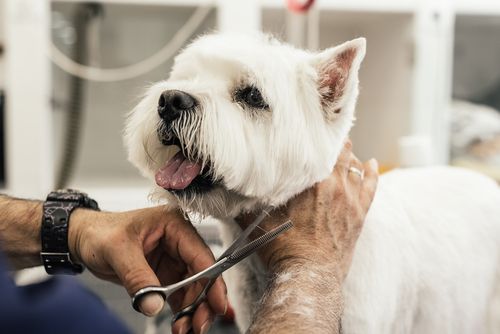
While for many people the concept of grooming your pet conjures up notions of brushes and bows, it is, in fact, a vital element to their overall health and wellbeing. Regularly grooming your animal allows any underlying diseases or conditions to be caught early which means earlier and more efficient diagnosis and treatment.
If you have a puppy or a kitten, it will be important for you to begin training them to like or at least tolerate the grooming process, which will be beneficial to them as they reach maturity. This is especially true of nail clipping and ear cleaning which requires them to sit completely still for the process.
Reputable breeders will often begin grooming their litters as soon as they are old enough to help get them used to the process. However, despite training and conditioning, not all animals enjoy the grooming process and many owners find it easier to send their pet to a professional groomer instead. Even if you do opt to use a professional pet groomer, there are still a number of regular grooming techniques that you can do at home with your pet to strengthen your bond.
Here are some of the important benefits of pet grooming.
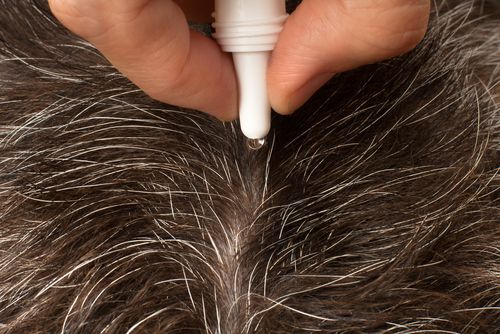
Saving Your Pet from an Itchy Problem: Fleas
Every parent to a furry pet knows how much of a nuisance fleas can be. At best, your pets become itchy and skittish, but at worst they become miserable and lethargic. And just like ticks, fleas can be a vector for disease for you and your pets! Fleas can be partly responsible for roundworms or flatworms as well as for infections including typhus, spotted fever, cat-scratch fever, or more rarely, the plague.
So what can we do? The best first step is prevention, but if that fails, there are ways to spot the beginnings of a flea infestation as well as ways to stop it in its tracks.
Preventing an infestation
Stop an infestation before it can start! When winter turns to spring and the weather starts to warm up, don't wait until you notice fleas on your pets or their playmates. You'll have a much happier home if you follow these easy steps:
Keep your home clean. Vacuum your house regularly, especially if you have deep pile rugs, and make sure your pet's favorite spaces are regularly cleaned/washed, aired out, and preferably getting plenty of sunlight.
Clean yards fend off more than ticks. Keeping a clean yard, including mowed lawns and trimmed foliage, will drastically reduce the potential for fleas in your outdoor areas. Keeping any trash, especially foods, carefully sealed for disposal will help keep away other animals that are likely to harbor fleas
Use flea treatments. There are a number of options for flea treatments available based on the type of pet you have and their age, including spot-on treatments, oral chews, and flea collars. Always read the instructions carefully to avoid harming your pet. And of course, always feel free to come in and talk to our staff about what treatments are best for your pet.
Consider professional pest control. This option isn't always in a pet owner's budget, and it should always be considered carefully to ensure the best health for your pets, plants, and fish. This can also help prevent other potentially nasty bugs from biting you and your animals, including mosquitoes.
Catching an infestation early
Sometimes, despite our best efforts, fleas find their way into our homes and onto us and our animals. Maybe it's because you live in an apartment and they hitch a ride on your neighbor's dog, or perhaps your selected flea treatment didn't last as long as you expected it to or wasn't effective at all.
No matter the reason, we've got a few tips on how to identify a flea infestation as early as possible. The earlier you identify it, the earlier you can get it under control!
Comb your pet regularly. You can monitor your pet's fur for fleas at multiple stages and check their skin for irritations, bite marks, or other signs of fleas, such as eggs or detritus (blackish-red "flea dirt"). You want to pay close attention to favored locations, such as the back of the head and around the ears, the armpits, or the rump. Remember: fleas will jump on and off of you and your pet, so finding signs of fleas is important, even if you do not find fleas themselves.
Fleas love to jump. Fleas are tiny and quick, but they usually appear in groups once the infestation has started. You'll probably be able to feel them jumping on and off of you, especially your feet and lower legs. Your pet's skin will probably also "jump," as they twitch from the movement of fleas (as opposed to being bitten).
Keep an eye on your pet's behavior. Are they scratching more than usual? Are they pulling their fur out? Do they have dermatitis? Are they biting at the same area over and over? These are all potential signs that fleas are present. Note: If this behavior is present, but you cannot find any other signs of fleas, take your pet in to be checked by a veterinarian so that they can ensure there are no other health problems.
White brings fleas to light. Sometimes it can be hard to determine if the evidence you're finding is of fleas, instead of just plain dirt, especially if your pet spends a lot of time outside. Put down white paper towels when you comb your pet with the flea comb so that you can check the detritus that falls off the pet onto the paper towel or is stuck on the comb to see if it's like dried blood, or if it looks like the earth around your home. Also, if you wear white socks, you'll be able to see the fleas jumping on and off of you.
Fleas don't just jump on you. In fact, individually they don't even spend most of their time on you or your pet. Check your pet's favorite places — the dog bed where they love to flop, the spot on the overstuffed chair where your cat loves to sun itself, or even the places in the house where they play the most. Fleas will leave behind similar detritus on your surroundings as they do on your pet.
Check all of your pets. If one pet is exhibiting signs of fleas, but your other pet's behavior hasn't changed and they don't scratch themselves much, that doesn't mean the fleas only want to eat one pet, it might just mean that your other pet isn't allergic to flea bites.
Anemia is a concern. Be sure to keep an eye on your pets during regular care and grooming. Lethargy, weakness, and even pale gums can be signs that they're anemic meaning that a high number of fleas are sucking their blood. Be sure to see your veterinarian so your pet can get well!

Canine Parvovirus, also known as CPV, is a highly contagious viral infection that can be debilitating and sometimes fatal. It has two main forms: the more common intestinal variety and the less common cardiac variety. Puppies aged between 6 weeks and 6 months old are most commonly affected, but early vaccinations can significantly reduce the risk of contracting CPV.
CPV is resistant to the majority of cleaning products with household bleach being the only known way to eradicate the virus.
What causes CPV?
CPV is generally transmitted through direct contact with an infected animal, either through inhalation or direct touch. However, CPV can also be transmitted indirectly through contact with the stools of an infected dog which can contain a heavy concentration of the virus. The virus can also live in the ground for up to a year where it can be brought into contact with a dog by way of shoes.
Certain breeds of dogs are more susceptible to CPV. These breeds include Alaskan Sled Dogs, Dobermans Pinschers, English Springer Spaniels, German Shepherds, Labrador Retrievers, Pitbulls, and Rottweilers. Dogs that take immunosuppressant medication or have not had adequate vaccinations are also more likely to contract CPV.
As with most contagious diseases, animal shelters and kennels are much more likely to be contaminated.
Symptoms of CPV
The intestinal variety of CPV affects an animals’ ability to absorb nutrients from their food. This means that an infected dog will rapidly become dehydrated and weak.
The primary symptoms of intestinal CPV include but are not limited to:
Anorexia / severe weight loss
Bloody diarrhea
Coughing
Fever
Lethargy
Pain, particularly if the abdomen is touched
Rapid heartbeat
Vomiting
Wet tissue of eyes and mouth becomes red and inflamed
In rare cases of CPV, a dog may exhibit symptoms consistent with hypothermia rather than a high fever. Cardiac CPV is extremely rare and usually only seen in very young puppies where it attacks their heart muscles. Cardiac CPV almost always results in death.
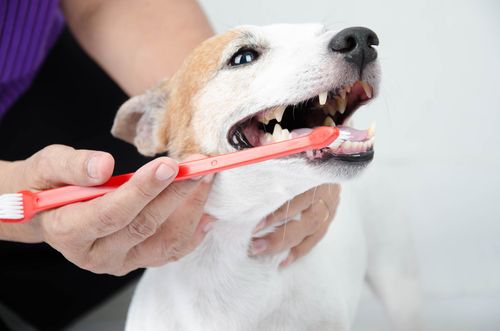
Don't ignore your pet's bad breath! Lack of proper dental hygiene is often the cause of stinky breath, but it may also indicate other, more serious issues with your pet's health. However, we do understand how easy it is to miss as most of the problems that stem from poor hygiene occur where you can't see them - below your pet's gum line.
The first line of defense is always home care. And while some animals, such as dogs, may tolerate their owners handling their mouths and brushing their teeth, most, especially cats, will struggle or act out. This can make oral care difficult at best, and at worst, ineffective.
The best way to ensure your pet's oral health is to have regular cleanings at our office. Our veterinarian will be able to discuss with you how often you ought to come in as well as a home hygiene regimen. This will help to prevent dental issues from progressing to larger (and potentially deadly) internal issues, such as dysfunction or disease in the heart, kidneys, liver, or lungs.
In the wild, hiding pain, illness, or other weaknesses are survival instincts. Many times, your pet will have the same instincts, even in the safety and comfort of your loving home, which is why keeping an eye on your pet's eating habits and behaviors is so important. However, recognizing the difference between normal changes in mood and red flags can be difficult sometimes.
What you interpret as a persistent grumpiness may actually be a sign that your pet is in pain. New irritability, shying away from being touched (especially on the face and around the mouth or throat), sluggishness, loss of appetite or difficulty eating, and lethargy are all behavioral signs which may indicate illness.
However, if you note any of the following physical changes, contact your vet immediately:
Red and swollen gums
Bleeding gums, especially when eating or when having teeth brushed
Swelling around the mouth
Oral abscesses, often appearing as swelling in the face
Abnormal chewing
Loose or missing teeth
Discolored teeth
Crusted build up at the edge of the gums
Persistent bad or fetid breath
Excessive drooling
Weight loss
Preventing oral infections and gum disease will help your pet live a longer, healthier life. And remember, caring for your pet with regular cleanings now will save you money later!

Our pets are beloved members of our family and seeing them unwell can be heartbreaking. Unfortunately, there are some illnesses that pets are unable to recover from. In the case of terminal illness and/or debilitating pain, one of the kindest things that we can do for them is to relieve them of that burden by making the difficult decision to put them to sleep.
How do I know if it is the right time to consider euthanasia?
Your veterinarian is the best person to advise you on when it is time to consider euthanizing your pet. However, there are some signs and symptoms to look for that would indicate that your pet is no longer experiencing a good quality of life. If you notice these, it would then be advisable to contact your veterinarian to determine if euthanasia would be the most humane course of action.
These signs include:
Chronic labored breathing, breathlessness and/or coughing
Chronic pain that cannot be controlled by medication (your veterinarian can advise if this is the case)
Frequent diarrhea and/or vomiting that leads to dehydration or severe weight loss
Inability to stand or move around
Disinterest in food or eating
Incontinent to the stage where they are frequently soiling themselves
No interest in communication with family members, treats, games, or other previously enjoyed activity
Zest for life is non-existent
While euthanasia is never an easy decision to make, a small benefit is that it allows family members the time to say their final goodbyes. This opportunity for final displays of love and affection with their pets helps to ease them into the grieving process. It is especially important to prepare young children as this may be their first experience of bereavement.
Many veterinarians will allow you to be present during the euthanasia procedure so that you can comfort your pet as they enter into their final journey. However, while this is a personal decision, it is not recommended that young children be present during this time.

When it comes to bringing a new pet into your home, preparation is crucial in order for them to make a successful transition. It can take days, weeks or even months for your pet to really feel at home. Here are our top tips for helping your new pet settle in.
Supplies and equipment
Ensure that you have all of the supplies and equipment your new pet will need. This includes basic supplies such as a bed, water bowl, and food, as well as toys and other items to stimulate their cognitive development and keep them entertained. Remember, your pet's emotional wellbeing and mental stimulation is just as important as their physical needs.
Prepare any other pets in the home
Ensure that any other pets in the home are up to date with their vaccinations. Whilst shelters do their best to treat any viruses, occasionally adopted pets do bring new diseases with them that could be transmitted to existing pets in the household.
You may also have to introduce existing pets to your new pet gradually until they get used to one another.
Register with a Veterinarian
As soon as you bring your pet home you should register with a veterinarian and make an appointment for your pet to have a thorough health check. Ideally, this should be done within a week of their arrival. They will be able to advise you on the correct vaccine schedule for your pet and ensure that there are no underlying illnesses or concerns.
You should also speak to your veterinarian about spaying or neutering your pet if it is not done already. There are thousands of animals in shelters across the United States that are desperate for loving homes. Limiting population growth further by having your pet spayed or neutered is the responsible course of action for any owner.
Establish rules and guidelines in advance
Establishing some basic house rules ahead of your pet's arrival can help create a routine that your pet will quickly adopt as his own. Knowing what to expect will also help him settle in much faster. Also, assigning specific responsibilities to family members can help them bond with your pet and take ownership of their commitment as a pet owner.
Being consistent with rules for your pet will make training them much easier. For example, do not start off by letting your pet sleep on the sofas if this is not a behavior you want to continue in the future.
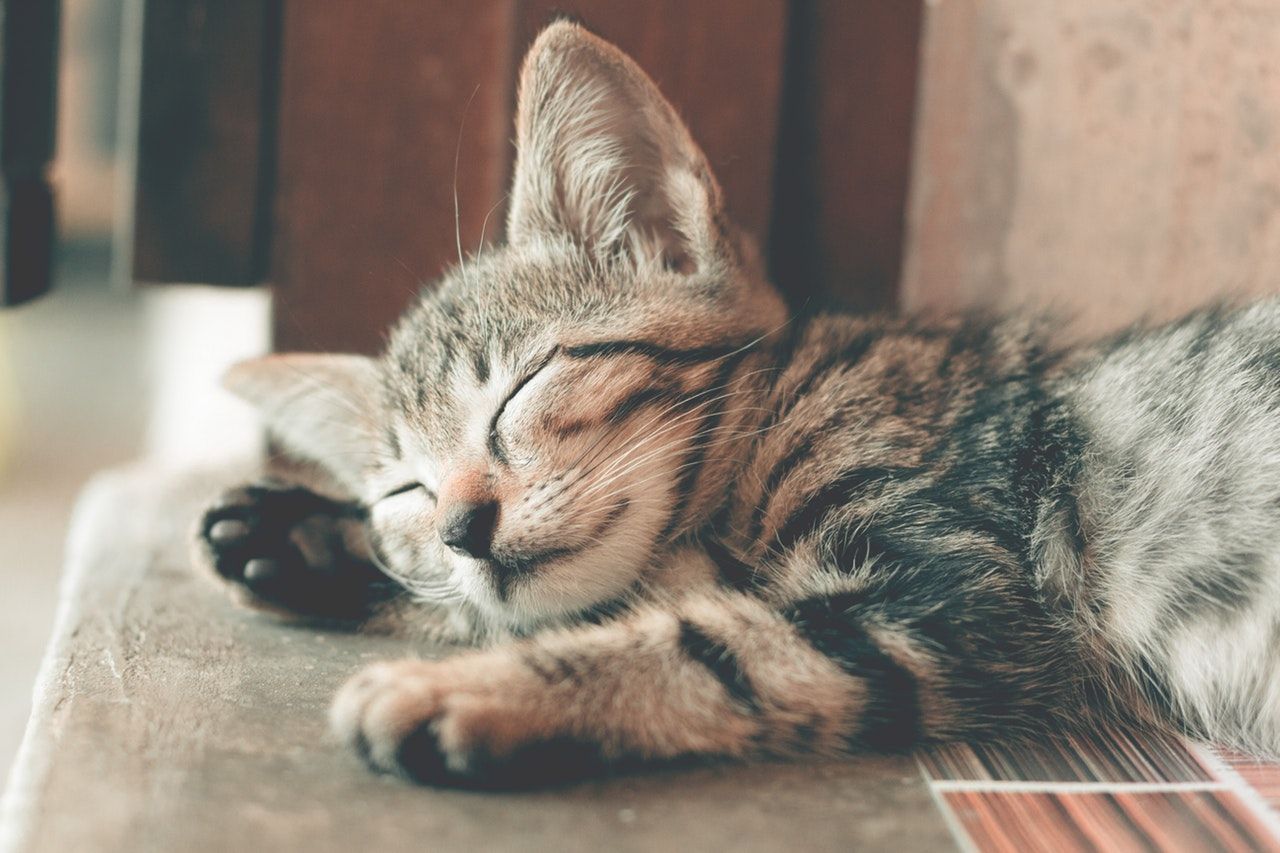
Feline Distemper, also known as Feline Panleukopenia and FPV, is a highly contagious viral disease that can be debilitating and even fatal. Kittens between 2 and 6 months of age are the most vulnerable to the disease, followed by pregnant and immune-compromised cats. Surviving FPV comes with immunity to any further infections by the virus.
What causes FPV?
The FPV virus is mainly transmitted through direct contact with the blood, feces or urine of an infected cat, but can also be spread by fleas that have been feeding on a contaminated cat. Humans can inadvertently pass FPV after handling the equipment used by contaminated cats if they do not follow proper handwashing protocols. The virus can live on surfaces for up to a year and is resistant to the majority of cleaning products with the exception of household bleach.
FPV attacks the blood cells of an infected cat, particularly those in the bone marrow and intestinal tract. If the infected cat is pregnant, the virus will also attack the stem cells of the unborn kitten. FPV makes your pet more vulnerable to other viral and bacterial diseases as well.
Symptoms of FPV
The primary symptoms of FPV include but are not limited to:
Anemia
Dehydration
Depression
Diarrhea (may be blood-stained)
High temperature
Loss of appetite
Rough coat
Vomiting
Other symptoms include lack of coordination, hiding away from owners, tucking feet away, or resting the chin on the floor for prolonged periods.
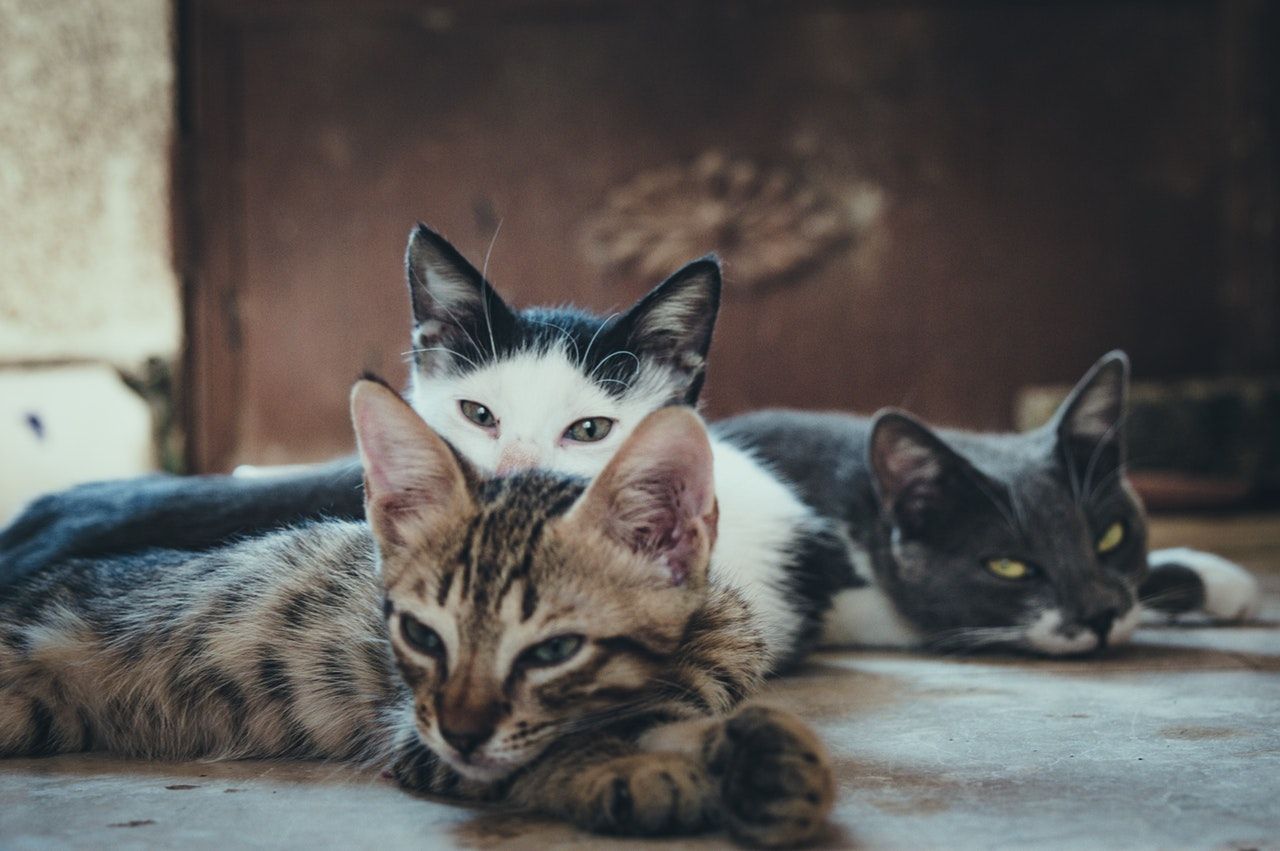
If you have decided that a cat is the right pet for you, you may think that the decision-making process is complete, but in fact, you are just beginning. Cats, like humans, are all very different and selecting one to suit your needs and lifestyle is vitally important as having a cat requires the commitment of your love, care, and attention for upwards of 10-15 years. Here is our guide to helping you pick your perfect cat.
Kitten or adult cat?
Many people instinctively choose kittens over adult cats due largely to their childlike cuteness, curiosity, and playful behavior. However, many do not realize that they need a great deal of supervision, patience, attention, and training. Leave kittens unsupervised in your living room for any period of time and you could be faced with a surprising level of destruction! It is also difficult to know exactly what personality they may develop once they outgrow their kitten traits. She may become a docile companion, or she may continue to be a mischievous and energetic ball of fur.
It is also important to remember that if you are bringing a kitten into a home with very young children, an added amount of supervision will be needed as your child may exhibit the same curious and mischievous behavior as your kitten and may not be as gentle as needed with the kitten.
By comparison, older cats may have outgrown some of that initial cuteness, but the typical behaviors that they exhibit after around the age of one will be a reliable indicator of their regular temperament.
Short vs long hair
Responsible pet owners should always make sure that their pets are well-groomed. In the case of long-haired animals, this can end up being a considerable commitment. Long fur needs to be brushed at least once per day in order to prevent matting. Therefore, if you decide on a long-haired cat, you will need to ensure that you have sufficient time to dedicate to daily grooming.
However, not all cats like being groomed and if your cat doesn’t, then you may have to enlist the services of a professional groomer and you will then need to factor in the cost of regular grooming appointments. But if your cat is one that loves to be pampered, then she will come running as soon as she sees her brush!
Personality and pure breed vs mixed breed
While purebred cats tend to conform to what is known as a ‘breed standard,’ meaning that you can predict their expected physical and behavioral characteristics based on breed type, each animal is still unique. Many people believe that purchasing a purebred feline will not only guarantee its temperament but will also ensure that it will be in good health, but sadly, this is not the case. Many purebred animals suffer from genetic health problems due to inbreeding.
It is also possible to estimate the physical and behavioral traits of mixed breed cats based on the combination of breeds used to create it. For example, combining two short-haired, highly active breeds will be extremely likely to produce another short-haired highly active cat.
As we have said, whether pure or mixed breed, each cat is unique and will require handling to suit their personality. Some are sedentary, some are active and some love to be stroked and handled while others will only come to you for petting when it suits them. If you are looking for a companion cat, then you would ideally be looking for a sedentary and tactile cat, whereas if you are looking for a cat to play with children, then you should aim for a more active breed.
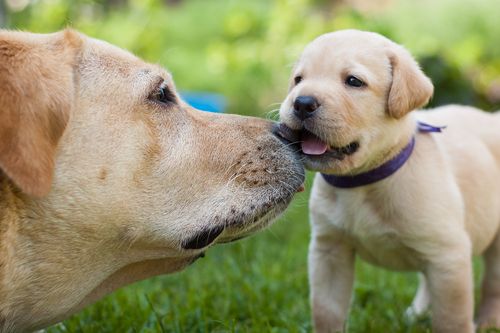
With the World Canine Organization recognizing over 300 different breeds of dogs across the globe, it can be extremely difficult to know which is right for you and your lifestyle. When deciding to bring a puppy into your home, you are making a commitment to at least ten years of love, care, and attention, which is why selecting the right dog for you is absolutely crucial.
With this in mind, we have put together this article to look at the physical and behavioral characteristics of a few popular breeds.
American Bulldog
Height (males): 22-28 inches Weight (males): 70-120lbs
Height (females): 20-26 inches Weight (females): 60-100lbs
Life expectancy: up to 16 years
Physical characteristics: Muscular, powerful and sturdy animals that are also surprisingly athletic. With strong jaws and muzzles, they can often look ‘mean’. The tail is low set and is thick at the base and tapers to a point. The coat is short and smooth and comes in an array of colors.
Temperament: American bulldogs make extremely loyal pets that display strong protective instincts towards their families. Highly alert and great with children, they are sociable animals that need to know their place in the family hierarchy. As a firm pack leader, good socialization from a young age and obedience training will make them easier to handle.
Exercise: They are relatively inactive when indoors, but need at least an average-sized yard and a long daily walk.
Health: This breed is prone to hip dysplasia.
Alaskan Mamalute
Height (males): 24-26 inches Weight (males): 80-95lbs
Height (females): 22-24 inches Weight (females): 70-85lbs
Life expectancy: 12-16 years
Physical characteristics: The largest of the arctic dogs, the Alaskan Mamalute is a well-built animal that strongly resembles a wolf. It has a plumed tail, large thick feet with tough pads and a dense, coarse coat up to three inches in length. While the coat can come in an array of colors, the muzzle and legs are almost always white.
Temperament: These dogs are sociable, loyal and bright. They are better suited to older children and love to please their human family. However, because they are so friendly, they are more likely to welcome intruders than scare them and therefore do not make very good guard dogs! However, they do have strong prey instincts and should not be around smaller animals. Strong leadership, obedience training, and proper socialization are critical as without them, they can become destructive.
Exercise: Alaskan Mamalutes are very active and love the outdoors, so they are best suited to homes with large yards and an owner who can commit to long daily walks. High fences with buried bases are a must as they like to try and roam. Since they often struggle with hot climates, they will need less exercise and plenty of cool water and shade during warmer times of the year.
Health: This breed is prone to hip dysplasia, bloating, and dwarfism.
Bichon Frise
Height (males): 9-12 inches Weight (males): 7-12lbs
Height (females): 9-11 inches Weight (females): 7-10lbs
Life expectancy: around 15 years
Physical characteristics: A small and sturdy dog, the Bichon Frise has a short muzzle and dropped ears covered in hair. It has a thick tail that is carried over the back and a double coat of up to four inches in length that is usually a shade of white, cream, apricot or grey.
Temperament: These extremely sociable animals make ideal companions as they adore human company and love to please their owners. They are excellent with all ages of humans as well as other dogs and are affectionate and intelligent. As with all small dogs, there is a risk of developing small dog syndrome where the animal feels that he is the pack leader to his humans. This can cause them to develop a number of behavioral problems, so be sure to assert yourself firmly as the pack leader in order to prevent small dog syndrome from setting in.
Exercise: The Bichon Frise can happily live in an apartment provided they are given regular exercise through daily walks and play.
Health: This breed can be sensitive to flea bites, and is prone to cataracts, skin and ear ailments, epilepsy, and dislocated kneecaps.
Boston Terrier
Height: 15-17 inches Weight: 10-25lbs
Life expectancy: approximately 15 years
Physical characteristics: Compact, square-bodied dogs with good muscle tone and erect ears, the Boston Terrier is a handsome animal. The legs are quite wide set, the tail is short, and the coat is short and fine.
Temperament: These are intelligent creatures that are easy to train and are affectionate with their family. They are good with people of all ages and love socializing. They are also at risk of developing small dog syndrome, so proper authority and obedience training is necessary to ensure that they know their place.
Exercise: Boston Terriers are suited to apartments as well as houses with yards, so long as they get regular walks and play.
Health: Their prominent eyes can be prone to injury, as well as a multitude of eye-related health problems, including glaucoma, ulcers, and cataracts. Deafness, tumors, and breathing difficulties when exercising or dealing with hot weather are also concerns.










